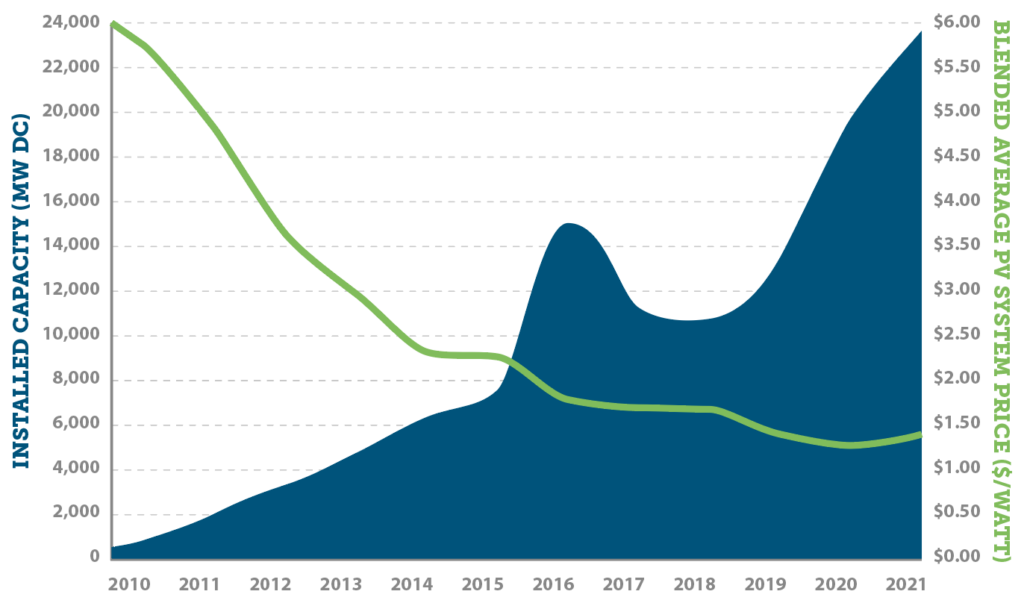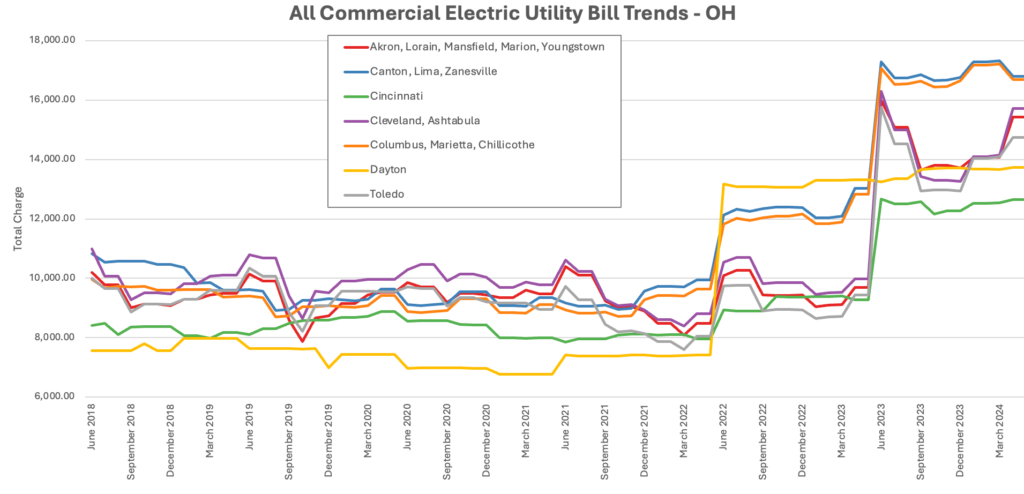Prices have decreased dramatically over the last decade but have begun to level off—or, in some cases, increase slightly due to inflation, trade policies, and market volatility. Meanwhile, federal incentives (like the Investment Tax Credit) are set to step down after 2032, and bonus depreciation schedules will gradually phase out. Waiting could mean missing out on significant tax benefits and facing higher utility prices as grid infrastructure ages and demand grows.


- Increasing Electricity Rates and Future Grid Costs
Electricity rates historically trend upward (around 3% per year), and future grid upgrades will likely increase prices further. Those already investing in solar now lock in their energy costs and avoid surprises down the road.- BUT… While the 3% increase per year has been the historical increase in utility price increases, this doesn’t mean that the trend will be true going forward. In some instances (as seen in the Ohio Utility Prices chart above) rates have doubled or tripled in a short period of time.

- Renting vs. Owning Electricity
Most commercial energy users “rent” their power from the grid. Solar lets you own your generation, creating a fixed, predictable energy scenario instead of relying on potentially higher future rates.

- Environmental and Brand Benefits
Solar shows your commitment to sustainability, which can help attract eco-conscious customers, employees, and stakeholders. Major corporations like Amazon, IKEA, and Apple have made significant public commitments to on-site solar for these reasons.
Wondering how locking in costs relates to long-term value?
Explore What Is Levelized Cost of Energy (LCOE), and Why Does It Matter? to understand how solar provides predictable energy costs compared to rising utility rates.
Concerned about future utility price hikes?
Learn how solar helps offset grid costs in Onsite Solar: Behind-the-Meter
Interested in the environmental and brand benefits?
See how goals align with system design in What Are Your Goals for Going Solar?
